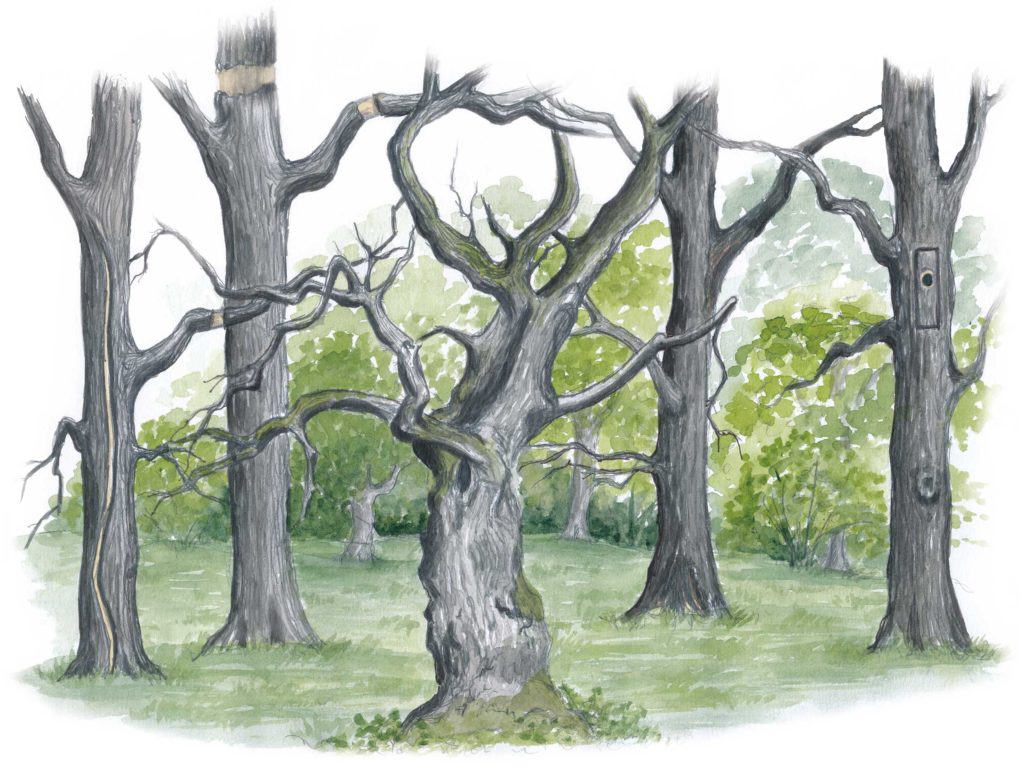Nature’s own processes
For various methods of veteranization, one should look to nature’s own processes. It is often hard to distinguish the damage created in these methods from the way nature itself creates substrates, such as trunk and branch fractures. In nature it is storms, snow, fire, lightning strikes, tree falls, fungi, woodpeckers, gnawing and rubbing animals that make holes, break branches, peel off bark and thus create the required structures. Before humans eradicated large herbivores like Irish elk, aurochs, wild horses and European bison, these animals also played a key role, not only in creating a mosaic heterogenous landscape, but also by using trees and other woody plants in various ways, often damaging them.
Specialized fungi do the job
When a tree is damaged, it’s the fungi that, together with microorganisms and insects, do the big job of creating habitats in the tree. In oaks, certain fungi are specialized at living in the sapwood, while other species are at home in the heartwood. We call these fungi ‘heartwood-decay fungi’, and some species of them are specialized at breaking down cellulose. They create a rot consisting mainly of the red wood substance lignin. We normally call this rot ‘brown rot’. Examples of fungi species that create brown rot are sulphur polypore, oak mazegill and beefsteak polypore. Other heartwood-decay fungi species break down both cellulose and lignin, and create what we normally call white rot. An example of such a fungi species is Phellinus robustus.
Fungi in trees – a hidden history
We know too little today about what controls wood fungi’s succession, niche differentiation and growth dynamics, but these processes are probably crucial to the huge diversity of species that follow different types of rots. Getting one or more species to form rot and cavities ‘on demand’ is more difficult than one would think, and takes a long time. Trees are far from defenseless against decay, and fungi can be latent inside trees for very long periods, without developing rot. Even if veteranization is one method for accelerating the formation of important habitats in trees, these are unfortunately slow processes that we are now able to learn more about by way of directed studies.
Our knowledge of this is only in its infancy, but will develop considerably over the coming decade.

